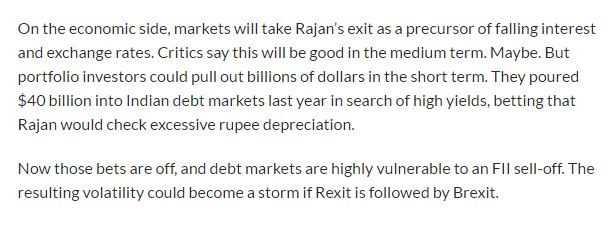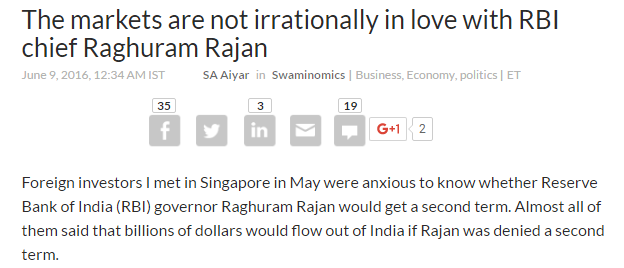In a recently published excerpt from a book, Prannoy Roy the owner of NDTV expresses dismay over the tabloidization of news channel while ipse dixit proclaiming his channel as the only non-tabloid news channel and thus in the process, condemning all others as such. Interestingly, he also uses the phrase ‘soft power’ in the same excerpt for the media but did not elaborates upon it; perhaps he does so in the book itself. He has expressed himself similarly on an earlier occasion too.
As viewers, should we be worried about this co-called Tabloidization? Certainly. In a healthy democracy, serious and thoughtful journalism should always occupy a position of primacy. However, tabloidization as a problem is rarely cancerous and almost always exposes itself and therefore, easier to balance and counter. A larger question is whether what Mr. Roy calls as tabloidization is actually tabloidization. Or is it something which disrupts the status quo bias in news reporting and challenges the fiefdom of some who felt ordained to control the Indian mind space, much like the 2014 general election results which enthroned a rank outsider to the top seat of governance shaking every Delhi Durbari. Make no mistake what is more potent and malicious than tabloidization is the phenomenon of agenda-setting done in the garb of so-called ‘good journalism’ as Mr. Roy puts it. This phenomenon of bias reporting and agenda – setting, which began in India with the state-owned media quickly transcended to the private sphere with the advent of commercialization of news. With active patronage from selective establishment forces at whose behest the perception and reality management is carried out, certain media outlets and people revelled and prospered.
The arrangement was simple; access and exposure to information and knowledge be restricted to a close group of people who were quickly anointed as liberals and intellectuals, priding themselves as deliverer of everything good that happens in India and guardian angel of the downtrodden. They were to indulge on tax payer’s money while being groomed into surreptitious but forceful agents of establishment often operating in circles not limited just to India but similar exclusive rackets internationally lending an additional halo of credibility. Such domesticated intellectuals were then embedded in dominant interest spheres such as education, bureaucracy as well as selective media outlets to further the cause of agenda-setting. These media agents will then churn out lies and propaganda at a rapid pace to change or set the discourse to suit their masters with effortless suavity. The payoff was handsome and quid pro quo hard to prove on paper. Resources were made available in abundance both in terms of access as well as finance.
The practice continued unabated and seamlessly transitioned to the newer media milieu from print to television to the internet to form a wide ranging media cabal that exerted itself in every sphere of public discourse and influencing decision making disproportionately. In fact, it became closely cross meshed and with time, even dynastic, so much so that finding son or a daughter of a top bureaucrat working in a media outlet whose owner itself a close relative of a top politician will seem perfectly nominal. Thus, a wide section of deeply entrenched elitist interest will be served without anyone battling an eyelid. A slice out of the life of this cabal was beautifully portrayed in a 1976 Hollywood movie called The Network.
But alas all things good or bad come to an end. The bigotry of this media cabal was to be disrupted by the advent of a powerful social media, which allowed for democratization and dialogization of opinion and thus, striking at their mystique and exclusivity. News could not be laden with biased views anymore for every news is closely scrutinized and hypocrisy stood exposed. Common masses with access to social media will explore all sides of a story and then come to the conclusion. Suddenly, no one was willing to buy anyone´s version of the story, least from this media cabal, at its face value. Semi-literate villagers, patronized as Brown Sahib´s burden, with access to smartphones were sending contrarian views in 140 letters to Oxford educated mercenaries (mind you mostly on government grants, which many of us would not even know existed before internet happened). People are asking whether conducting rapid fire rounds with a tadipaar criminal is tabloidization or not? Questions like these have riled them up to no end. First, they tried to dismiss these contrarian voices as inconsequential, inane but after May 2014 these voice became ultranationalists, bhakts, uncouth etc. Those who broke their rank to tell what the nation wants to know are called crass, loud, Agent Provocateur etc.
It is natural that after enjoying power and dominance for so long that it takes some time before the reality actually sinks in. They are cornered and stand exposed naked in light of intense public scrutiny. Seeking retribution by calling upon their brethren embedded in other sections of civil society to stage a joint coup such as the failed attempt of Award Wapsi drama or by wailing, yet sermonizing behind a blackened screen (no one’s watching anyway) is not going to cut any ice anymore. Yes, all this shenanigans might inflict a blow or two to a regime which seems to initially benefit from this disruptive power of social media, but can such desperate acts really cage millions of Indians again, who have freed themselves from the shackles of such vicious media cabal .
Nonetheless, this cabal is not the one to let it go so easily after all a lot (read loot) is at stake and therefore, they will undoubtedly seize every opportunity to discredit their adversaries, particularly in the social media. This is why the next time you hear someone ruing over the tabloidization of Indian media take one hard look and decide for yourself if it’s a genuine concern or is it a voice of a vested interest masquerading as a media intellectual.












